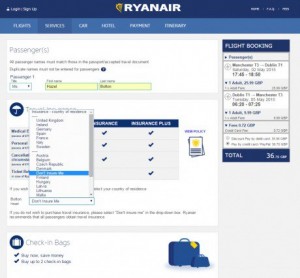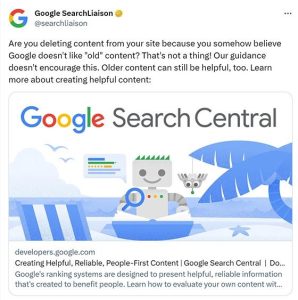— September 28, 2017
In the world of startup development and marketing, it can feel as though every day brings with it some sort of new technology, outreach channel, or social platform that we all need to rush to keep on top of. From virtual reality, to wearables, to push notifications, staying current with the latest trends is exhausting.
Unfortunately, staying on track with the current trends isn’t just about ensuring that you know how to reach your customers either – it’s also about making sure that you can engage them in a way that they really relate to.
While words (like the ones you’re reading now), and pictures aren’t exactly about to go extinct, the rise of the mobile world has popularized brand new ways of communicating, from gifs and memes, to the topic we’re covering today: emojis.
It might be a surprise to learn this, but statistics show that mobile users actually love emojis – particularly when they’re used in marketing messages. Those push notifications that are packed full of smiley faces are opened 85% more often than their non-emoji counterparts.
Sure, emojis seem like something that’s best left to teenagers, but there’s something about them that could really add a bit of spice, and value to your marketing strategy as a startup business. So, let’s take the bull by the horns and start examining this new communication medium in a little more depth.
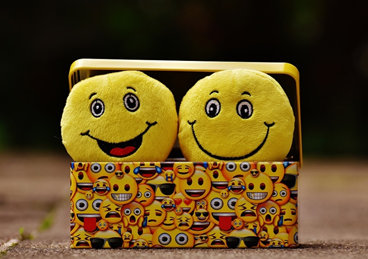
Where Did Emojis Come From, Anyway?
Emojis began their life in Japan, which is really no big surprise if you’re familiar with many of the amazing things that come from that side of the world. The very first emoji was developed during the 1990s, by a man known as “Shigetaka Kurita“, an employee at the DoCoMo telecoms company.
At the time, the business was working on launching its first internet platform, called “i-mode”, and Kurita was searching for a good way to effectively convey information through tiny cellular screens. He drew inspiration from Japanese written characters called “kanji”, and developed the first 176 emojis, which were quickly adopted by many other mobile providers across Japan.
So, how did these little faces get all the way from Japan to here? Well, it was sort of a mistake. Initially, Apple and Google had some trouble breaking into the mobile market in Japan.
Partially, this was because their early versions of iOS and Android simply didn’t support emojis. In an attempt to open up the marketplace, Apple made emojis available to any customer that downloaded Japanese apps for language, and word quickly got out.
Soon, emoji support was released for all iPhone users during 2011, and Google quickly followed suit, meaning that everyone can access emojis from almost any phone.
The rise of emoji has been far more significant than you might expect. Around 92% of people online use emojis, in everything from Instagram marketing, to Facebook and twitter. In fact, emojis on Instagram are a pretty big deal for generating interest from your audience. Nearly half of the text that’s posted on Instagram is made up entirely of emojis.
Although most of us assume that emojis are most popular among children, 62% of the people who use them are over the age of 35. In other words, you’ve got plenty of opportunities for startup marketing. On top of that, Emojis are so popular that one of them was even named “word of the year” in 2015.
Emojis in Push Notifications Inspire Action
As we mentioned briefly above, emoji-powered notifications are far more impactful than their emoji-free counterparts. Open rates are about twice as high in messages that come with emoji, meaning plenty of new chances for sales.
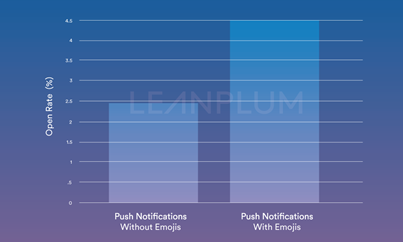
To look at this matter in closer detail, we can see that there’s a simple, data-based connection between things like retention and emojis. On average, simply sending a push notification increases retention by around 20%. Since most people never return to an app after the first time they use it, boosting retention means more chances that your users will stick around for the months to come.
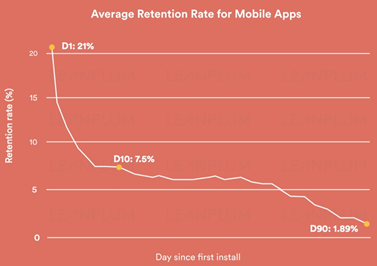
But why are emojis so effective at inspiring that retention for startup brands?
One reason could be that emojis appeal to us on an emotional level. That should make sense if you consider the fact that emojis are simply an easy way of expressing emotion. The science behind emojis has discovered that our minds can process these pictures as a form of communication that doesn’t involve actually speaking to someone. This adds a level of emotional depth to your copy that’s difficult to create with text alone.
Basically, it makes users feel more as though they’re having a face-to-face conversation with you, because they can see reactions in the form of smiley or sad faces. In a way, emojis are very similar to old-school emoticons, which used to make it easier for us to convey our emotions over the internet. They help to clarify when a statement is made with seriousness, or humor.
On top of that, it’s safe to say that emojis generally have more flair than plain, basic text. They bring color and excitement to a piece of copy.
So, how are Brands Using Emojis?
Every startup brand isn’t necessarily using emojis quite yet – but you’re bound to have noticed the fact that they’ve become ridiculously popular.
A lot of startup companies have started to use emojis in their Facebook posts, tweets, and mobile messages, and some are taking advantage of the possibilities that emojis offer in a host of different and exciting ways. For instance, Taco Bell launched a campaign to start a “taco” emoji:
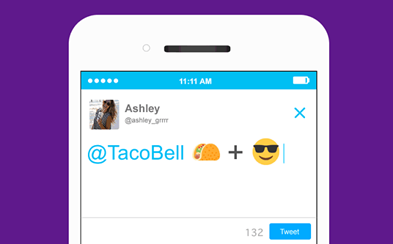
In a similar vein, Dominos allowed their customers to start ordering pizza just by tweeting a pizza emoji:
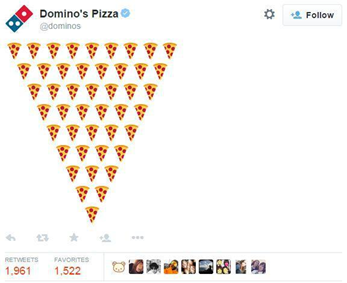
The World Wildlife Fund tried to draw attention to their issues regarding endangered animals by highlighting the use of emojis:
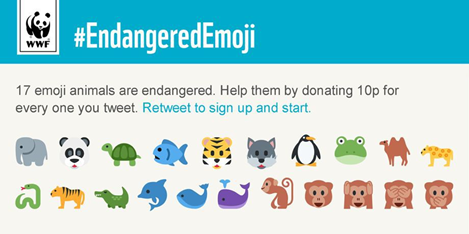
Even Chevrolet announced their new 2016 Chevrolet Cruze with a press-release crafted entirely out of emojis.
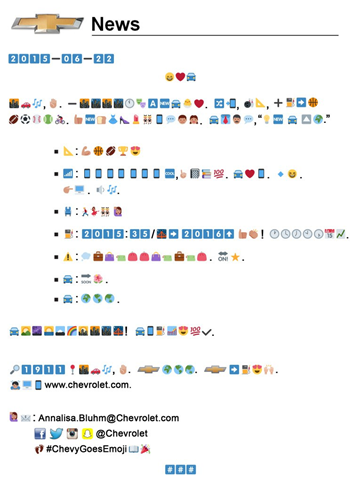
All of these brands used emojis in an attempt to get more media attention – and they succeeded in their goals. Sure, they were trying to generate engagement, but they were also reflecting the language of their audience, and pandering to the fact that people enjoy using emojis to express themselves.
What to Remember When You’re Using Emojis
There are a few rules you need to follow when you want to communicate with your audience on the right level.
1. Hidden Meanings
Plenty of emojis mean exactly what you’d think they would mean. For instance, if someone uses a picture of a cellphone, then they’re probably referring to a phone. However, there are some emojis out there that have acquired cult meanings that might not be obvious if you’re new to the medium. Make sure that you do a little research before you start using anything, just to ensure that you’re not going to give the wrong impression.
2. Emoji Fatigue is Real
Emojis are a fun and interesting way to appeal to your audience, but you need to be careful with how much you’re using them. This is less of a problem for people on Instagram, where emojis seem to be a way of life, but if every piece of outreach you use comes with a list of emojis, you might need to re-think. A little A/B testing could be a good way to figure out what works best for your audience.
3. Evolve with your Audience
Let’s face it, emojis aren’t exactly a brand-new feature in the online world, but their rising popularity means that it’s important to keep track of what’s happening in the marketplace, and what your audience preferences are. Make sure that you keep track of trends and usage, so that you can ensure that your emoji game, just like your social media tactics, remain current and effective.
Emojis Let You Speak your Audience’s Language
Once upon a time, marketing messages were pretty far removed from personal communication, but you only need to glance at Instagram to see that this isn’t the case today. Mobile marketing is an inherently personal medium, and it’s becoming more important for marketers to understand how they need to communicate with their audience on a deeper level if they want to generate more engagement, and potentially better profits too.
Today, dry and corporate-sounding push notifications look boring and overly-promotional next to messages that come from friends and family. It’s time for companies to get personal, and emojis are a great way to do this. They’re kind of like slang, in the way that they allow brands to speak the same language as their users. As far as the stats show, those ever-elusive millennials also engage with emojis more than any other age group.
Today, emoji-powered messaging is more important than you might think.
Business & Finance Articles on Business 2 Community
(110)
Report Post


